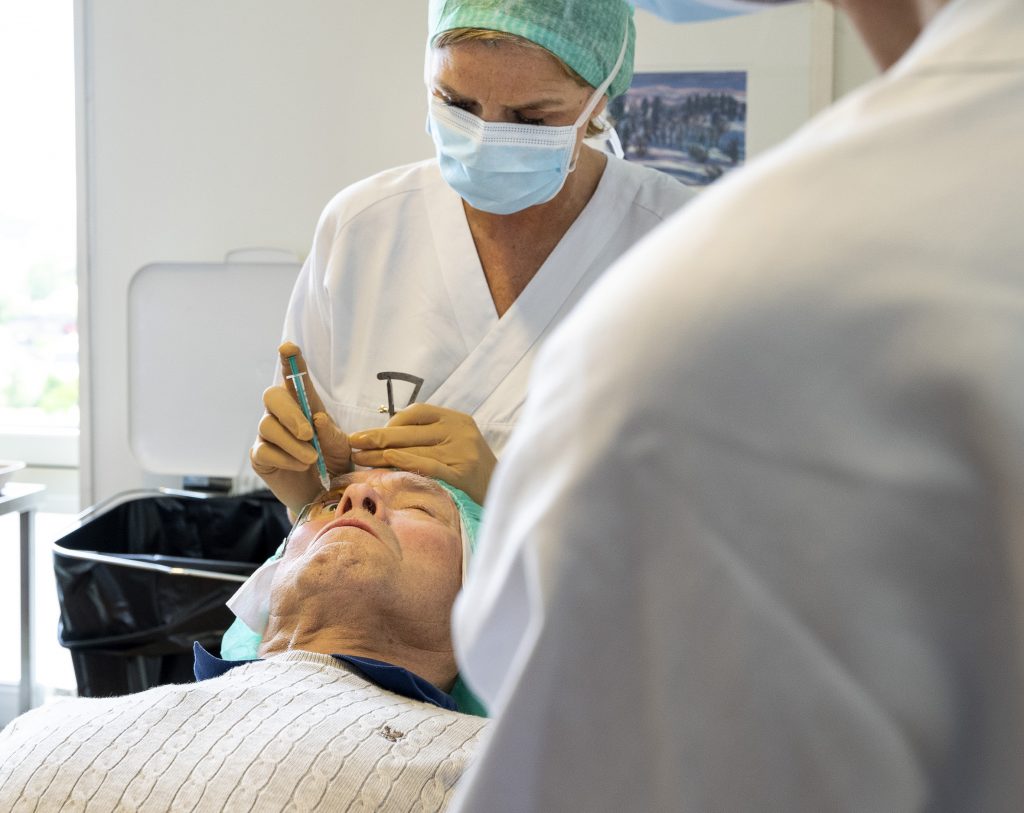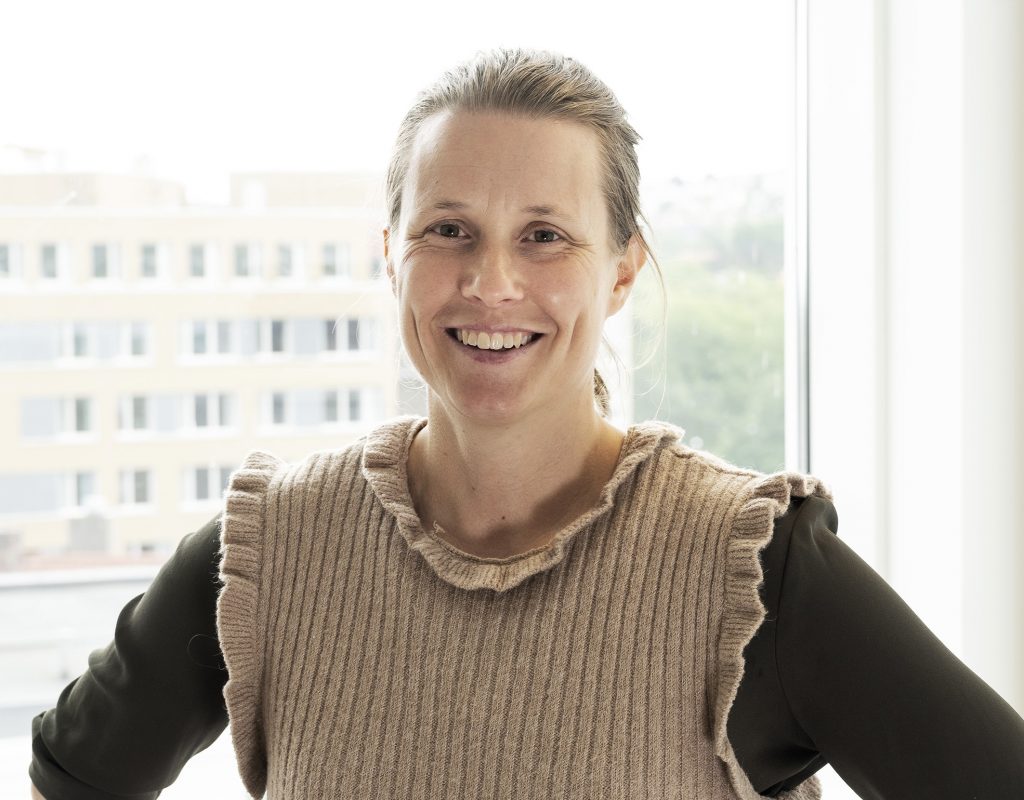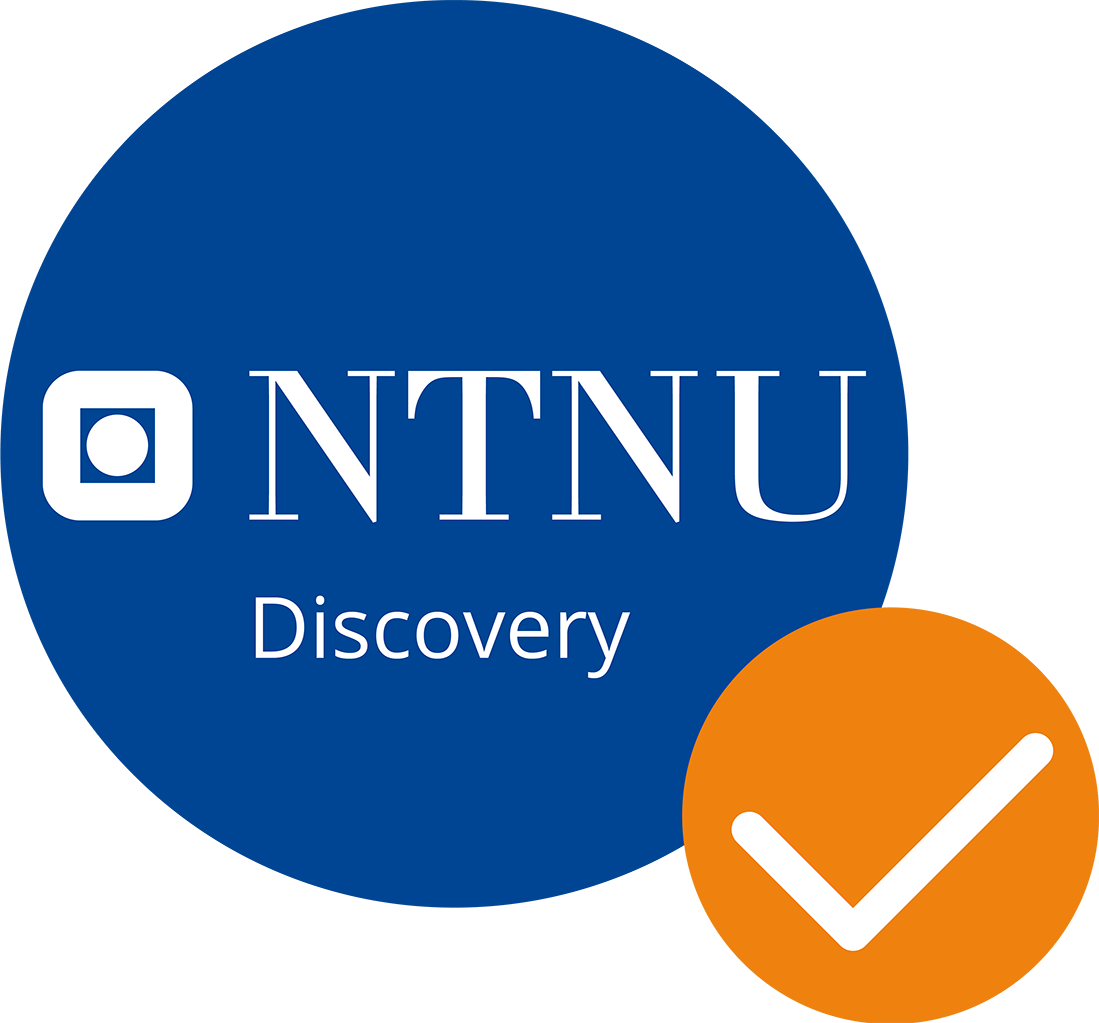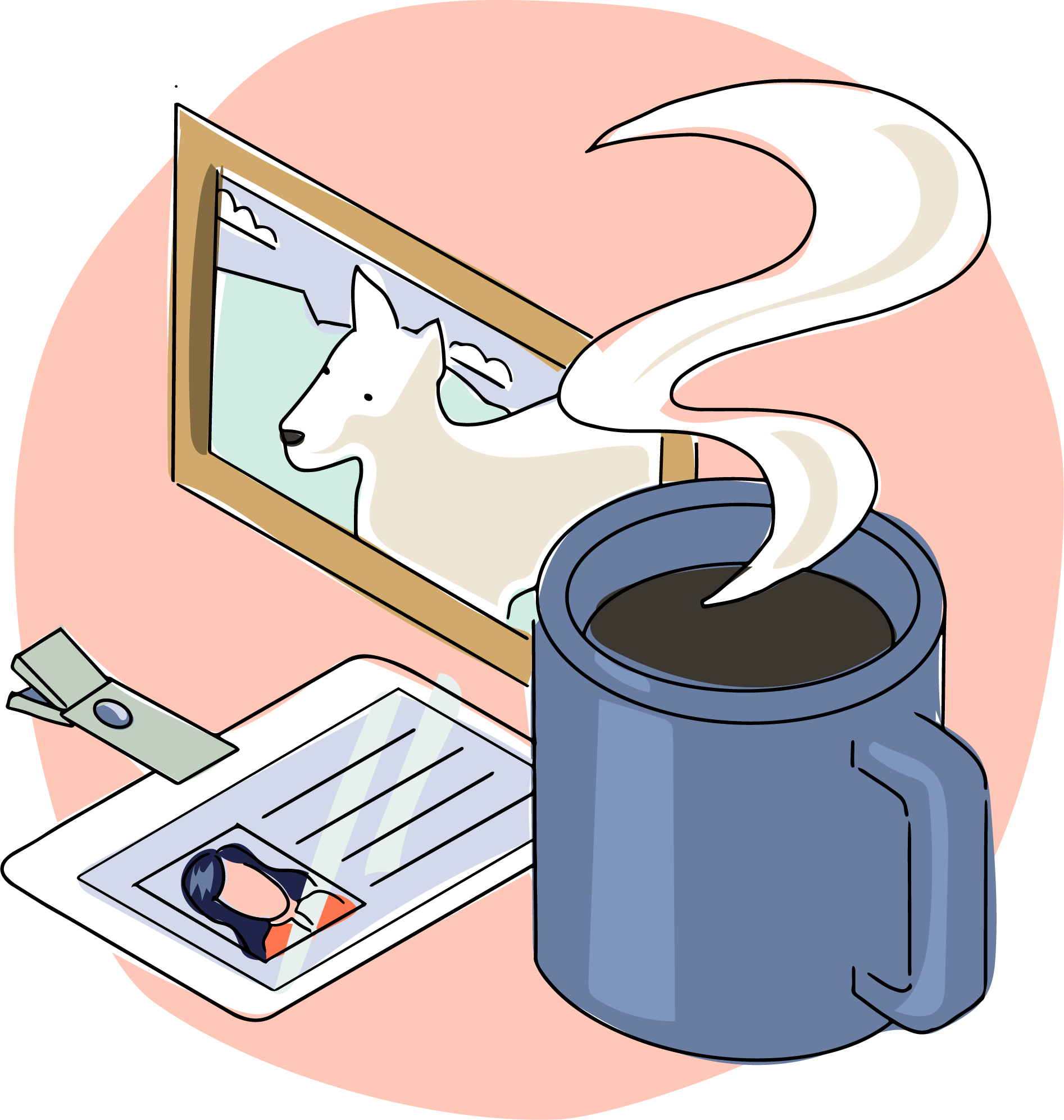
Kurser sykepleiere til å stikke av med legeoppgaver
Tekst og foto: infinitiv.no
Skal utvikle opplæringsprogram for øyeinjeksjoner.
– Åpne øynene godt, kikk langt bakover. Se rett opp i taket. Pust godt med magen! Supert!
Sykepleier Anne Roel instruerer Jan Owesen fra Melhus rolig og bestemt. På et øyeblikk stikker hun en sprøyte inn i det høyre øyet til Jan Owesen og injiserer en dose medisin mot netthinnen.

Dette er rutine for begge to, Jan nærmer seg snart det hundrede stikket. Han er en av mange pasienter som har fått beholde synet sitt takket være den revolusjonerende medisinen mot aldersrelatert makuladegenerasjon (såkalt våt-AMD). Tidlig på 2000-tallet ble det oppdaget at Avastin, en vekstfaktorhemmer som tidligere ble brukt i behandling av tarmkreft, også fungerte utmerket i behandling av ulike netthinnesykdommer.
Krever behandling ut livet
Dessverre er tilstanden kronisk. For at synet ikke skal svekkes, må pasienten få injeksjoner av medisinen i det syke øyet fire til seks ganger i året resten av livet. Det ble fort klart at behandlingen kom til å kreve store ressurser og mye tid av legene. Fra å sette årlig 200 injeksjoner i 2006 på øyeavdelinga på St. Olavs, ble det satt nesten 7000 injeksjoner i fjor.
– Vi måtte finne på noe lurt, behandlingen krevde masse legeressurser, sier øyelege Stine Bolme.
Hun har vært lege på øyeavdelinga til St. Olavs hospital siden 2013 og er ph.d.-kandidat ved Fakultet for medisin og helsevitenskap. Hun ønsker å utvikle et kurs for å få sykepleiere over hele landet til å ta over den ressurskrevende oppgaven fra øyelegene.
Jobbglidning
– I Norge har det ikke vært stor tradisjon for jobbgliding, hvor oppgaver blir overført fra en yrkesgruppe til en annen. For å overbevise folk om at sykepleierne var like gode til å gjøre jobben som leger, kjørte vi en randomisert kontrollert studie blant våre pasienter, sier Stine Bolme.

Fra 2015 ble flere sykepleiere på øyeavdelinga på St. Olavs hospital kurset til å utføre injeksjoner gjennom utallige stikk på griseøyne, innføring i timebestillingsprogrammer og praktisk veiledning fra øyeleger.
Pasientene ble delt i to grupper – en fortsatte å få injeksjoner utført av leger, den andre gruppen skulle få injeksjoner av sykepleiere.
Til slutt testet de synsstyrken på pasientene i undersøkelsene.
– Vi fant ut at sykepleierne ikke var dårligere enn legene. Vi var ikke overrasket over funnet, sier øyelege Stine Bolme.
Ikke mye penger å spare – men andre fordeler
Men det de derimot ble overrasket over, var at det ikke er så mye penger å spare på å la sykepleiere gjøre jobben leger tidligere gjorde.
– Sykehuset sparer under hundre kroner per injeksjon. Det er litt, men ikke så masse. Lønnsforskjellen mellom leger og sykepleiere er ikke så stor i Norge. En tilsvarende studie fra Singapore viser at der sparte de uhorvelig mye, sier hun.
Selv om det ikke er store summer å spare, er det likevel mange andre fordeler.
– Leger kan brukes til andre oppgaver, vi får større fleksibilitet på avdelinga og vi får mer fornøyde sykepleiere. Kjapp behandling er veldig viktig. Når vi har god kapasitet, så kommer pasientene fortere inn, sier Stine Bolme.
På mange andre sykehus blir denne jobben fortsatt utført av leger. Men på St. Olavs hospital er det nå utelukkende sykepleiere på poliklinikken. Erfaringene har vært såpass gode at Stine Bolme nå utvikler et kurs som å lære opp sykepleiere landet over til å gjøre denne jobben.
– Vi har allerede hatt pågang fra andre øyeavdelinger, sier hun.
NTNU-kurs
Stine Bolme ser for seg et kurs som holdes en til to ganger i året i regi av NTNU. Kurset skal blant annet bestå av en teoridag, øvelse på griseøyne og deretter trinnvis flere og flere prosedyrer på en pasient, under nøye observasjon av erfarne leger og sykepleiere.
– Målet er å lage tre type kurs: et sertifiseringskurs, et resertifiseringskurs (som må tas annenhvert år etter første kurset) og et instruktørkurs.
En utfordring er å finne bilder på ulike øyelidelser som kan påvirke behandlingen. For eksempel bør ikke pasienter med blefaritt, en ufarlig øyelokksbetennelse i vipperrota, ikke få behandling, og da må sykepleierne kjenne igjen denne lidelsen. Til de interne kursene på avdelinga har de brukt bilder fra åpne kilder på nett, men som ikke nødvendigvis kan brukes i kursmateriell som skal distribueres til kursdeltakere og instruktører.
Derfor har de fått midler til å kjøpe inn en spaltelampe med kamera som de skal bruke til å ta egne bilder som kan brukes i undervisningsmateriell. Kameraet er nå installert på øyeavdelingen, klar til å bli tatt i bruk når det dukker opp en pasient med en lidelse som sykepleierne bør kjenne til.
Kundene vil være øyeavdelinger rundt om i landet. På sikt ønsker Stine Bolme å selge kurset til andre land og eventuelt også lage en digital variant.
På øyeavdelinga på St. Olavs hospital er Jan Owesen ferdig med dagens to stikk. Han venter nå på skyss hjem, hvor han skal «ligge på sofaen og bli oppvarta». Gjennom 12 år har han fått injeksjoner av både leger og sykepleiere. Han er ikke i tvil:
– Det er mye bedre med sykepleiere, blunker han.
Prosjektet har fått 200.000 kroner i støtte (forprosjekt til ansatte) fra NTNU Discovery.
Andre nyheter
Nye millioner til ansatte og studenter
Stor prisutdelingskveld med tildeling av hovedprosjektmidler fra NTNU Discovery under arrangementet Tech, Hugs and Rock’n’Roll på Digs torsdag 5. juni.
Femten minutters bedømmelse
Du får femten minutter til å overbevise juryen i NTNU Discovery om at ditt prosjekt er verdig støtte til hovedprosjektmidler.
Kunnskapsmangel gir kattepine
Hvis katter skal leve opp til ryktet om å ha ni liv, må katteeiere få mer kunnskap om kjæledyrene som okkuperer fanget vårt mens vi ser på TV og holder oss med selskap når vi går på do.
Millioner til banebrytende idéer
Lyddempende paneler limt sammen av sopp. Avansert mikroskopkamera som filmer hjerneceller på aktive forsøksdyr. Miljøvennlig gassinjektor til øyekirurgi som reduserer risikoen for komplikasjoner og klimautslipp. Dette var noen av de innovative oppfinnelsene som ble tildelt NTNU Discoverys hovedprosjektmidler ved utdelingsseremonien på Gruva på Gløshaugen torsdag 7. november.
Operasjon og innovasjon
Helse Midt-Norge RHF er en trofast hovedsamarbeidspartner til NTNU Discovery. Det betyr at alle ansatte i regionens største arbeidsplass, rundt 22.000 i tallet, kan få støtte til å teste ut om idéene sine har et kommersielt potensial.
Kontakt:
Prosjektleder
Jan Hassel
Epost: jan.hassel@ntnu.no
Telefon: 906 53 180
Kontor: Hovedbygget, sokkel
Håvard Wibe
Epost: havard.wibe@ntnu.no
Telefon: 41 47 37 68
Kontor: Hovedbygget, sokkel



